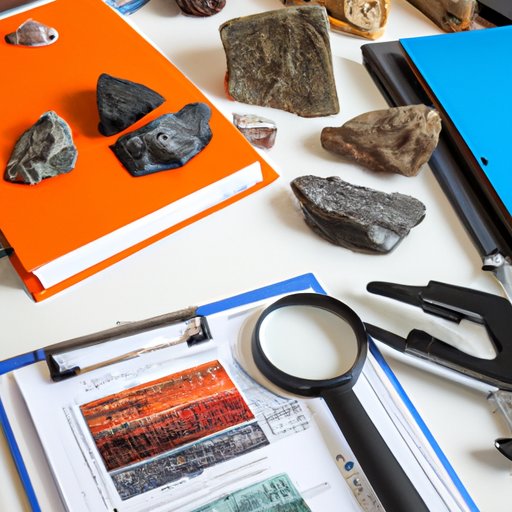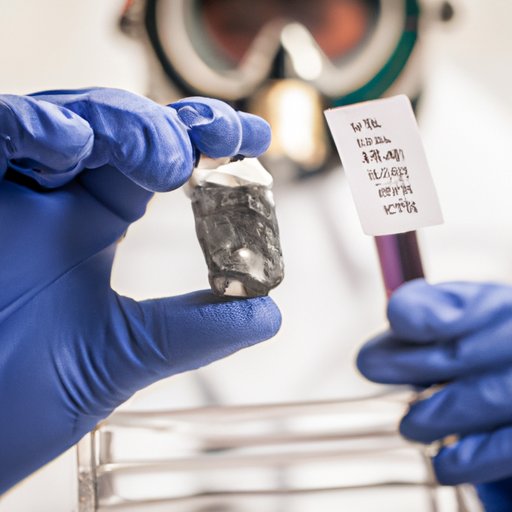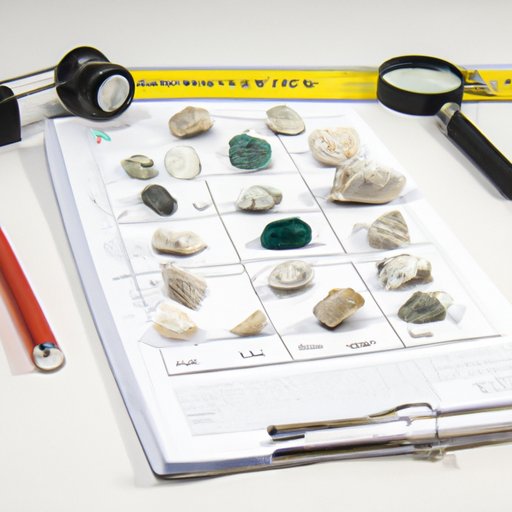Introduction
Minerals are naturally occurring substances that form rocks and other geological structures. They are classified based on their chemical composition, crystal structure, and physical properties. Identifying minerals is a complex process that involves understanding the different techniques used to identify them.
Exploring the Different Techniques Used to Identify Minerals
The process of mineral identification begins with an examination of its physical properties. Color, luster, streak, hardness, cleavage, and fracture are all characteristics that can be used to identify minerals. In addition, chemical tests such as flame tests, specific gravity tests, and acid tests can be used to determine a mineral’s composition.

The Process of Mineral Identification and Classification
When identifying minerals, scientists examine physical properties and perform various tests to determine its composition. The first step is to observe the mineral’s color, luster, streak, hardness, cleavage, and fracture. These characteristics are then compared to known samples in order to make a tentative identification.

Analyzing Physical Properties of Minerals
Color is one of the most easily recognizable physical properties of minerals. It can range from colorless to black, and can also have shades of red, yellow, green, blue, or brown. Luster describes the way light reflects off a surface. Minerals can have metallic, nonmetallic, or earthy luster. Streak is the color of the powder left behind when a mineral is scratched against a hard surface. Hardness measures how resistant a mineral is to scratching, and is measured on the Mohs scale of hardness. Cleavage is the tendency of a mineral to split along certain planes. Finally, fracture is the pattern a mineral forms when it breaks apart.

Using Chemical Tests to Determine Mineral Composition
In addition to physical properties, chemical tests can be used to determine the composition of a mineral. A flame test is a common method for identifying minerals. It involves heating a sample of the mineral and observing the color of the flame. A specific gravity test is used to measure the density of a mineral. An acid test is used to identify carbonate minerals; acids react with carbonates and produce a bubbling reaction.
How Do Scientists Identify Minerals?
Scientists use a variety of techniques to identify minerals. First, they examine visual characteristics such as color, luster, streak, hardness, cleavage, and fracture. Then, they perform various tests to determine the mineral’s composition. Finally, they compare the results to known samples in order to make an identification.
What Tools Are Used for Mineral Identification?
Tools used in mineral identification include hand lens, magnifying glass, streak plate, hardness kit, acid kit, and flame test kit. A hand lens is used to examine the color and luster of a mineral. A magnifying glass is used to examine the crystal structure of a mineral. A streak plate is used to determine the streak of a mineral. A hardness kit is used to measure the hardness of a mineral. An acid kit is used to conduct an acid test. Finally, a flame test kit is used to conduct a flame test.
Understanding the Different Types of Mineral Testing
Advanced methods of mineral identification include X-ray diffraction, infrared spectroscopy, and electron microscopy. X-ray diffraction is used to determine the crystal structure of a mineral. Infrared spectroscopy is used to identify minerals based on their absorption of infrared radiation. Electron microscopy is used to examine the surface features of a mineral at high magnification.
Conclusion
Identifying minerals is a complex process that requires knowledge of the physical properties and chemical composition of minerals. By examining color, luster, streak, hardness, cleavage, and fracture, as well as performing flame tests, specific gravity tests, and acid tests, minerals can be identified and classified. Tools such as hand lens, magnifying glass, streak plate, hardness kit, acid kit, and flame test kit can be used to assist in the identification process. Advanced techniques such as X-ray diffraction, infrared spectroscopy, and electron microscopy are also used to identify minerals.
(Note: Is this article not meeting your expectations? Do you have knowledge or insights to share? Unlock new opportunities and expand your reach by joining our authors team. Click Registration to join us and share your expertise with our readers.)
